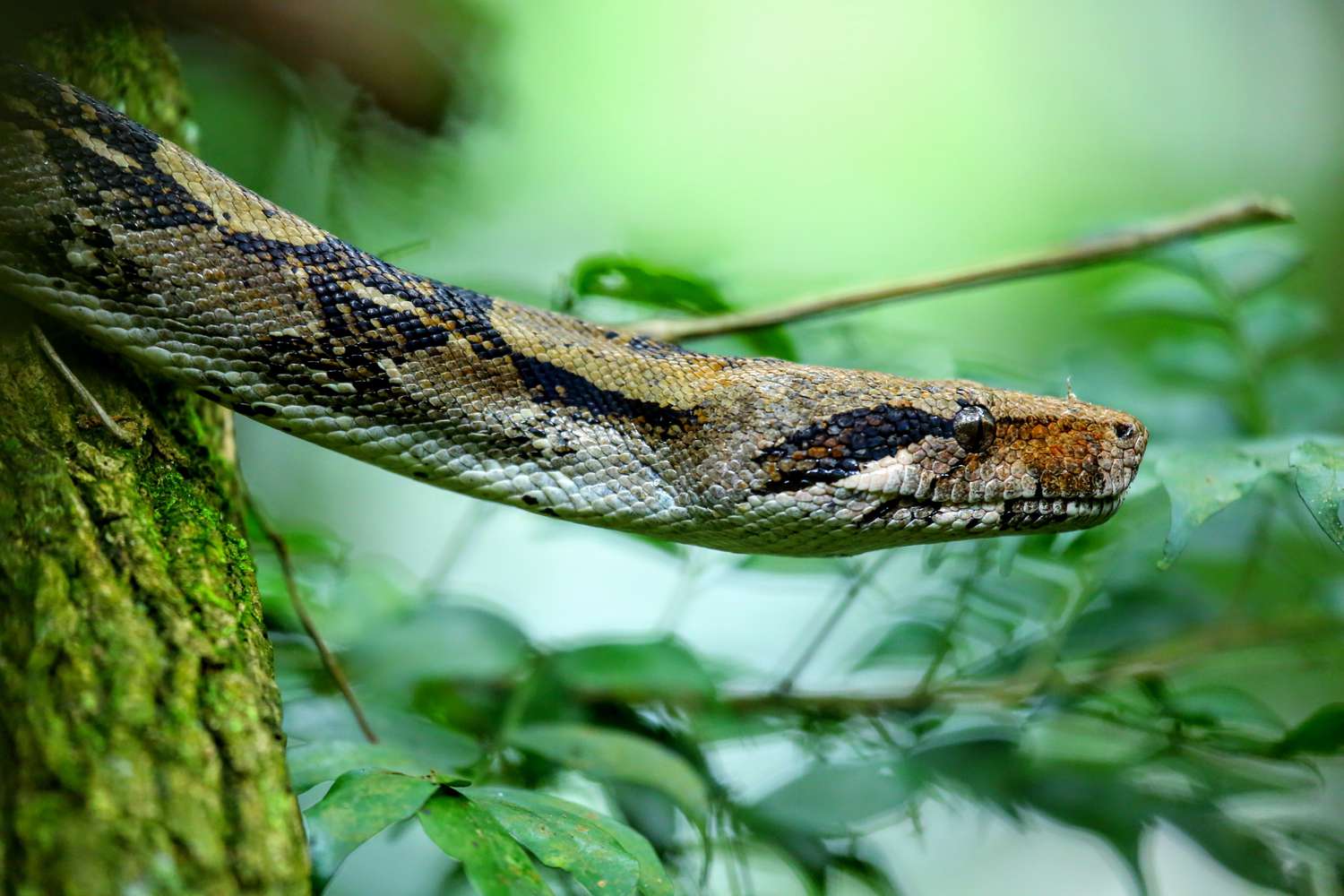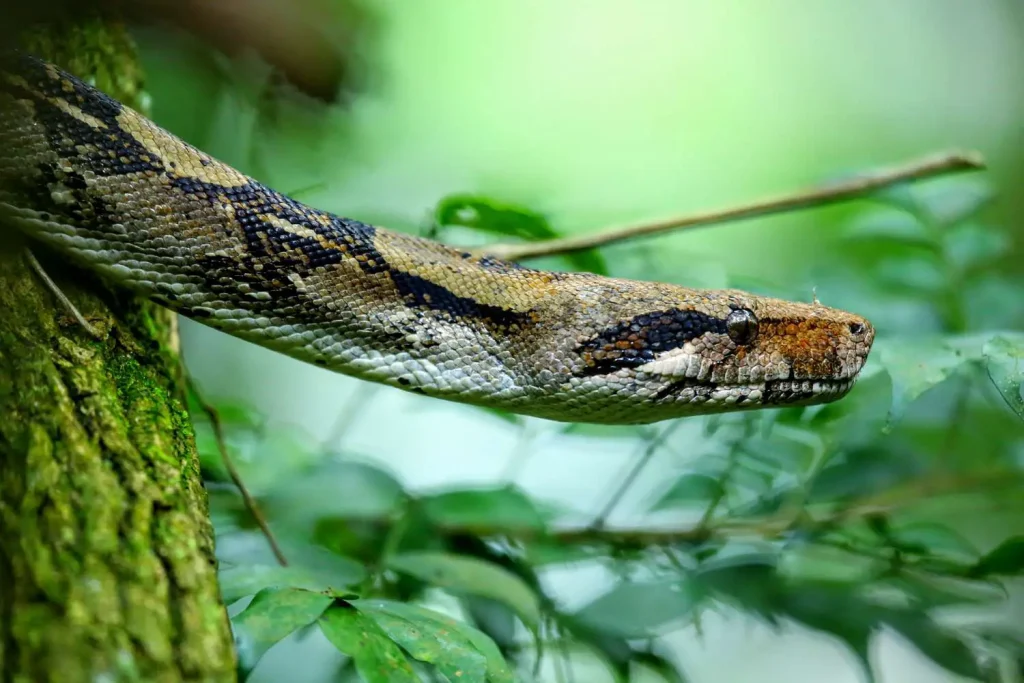Boa constrictors are fascinating creatures that have captured the attention of humans for centuries. These large, muscular snakes are known for their impressive hunting abilities and unique physical features. However, there are many interesting facts about boa constrictors that you might not know. In this article, we will explore ten fascinating facts about these amazing snakes that will leave you amazed. So, let’s dive in and learn more about these incredible creatures!
Boa constrictors are fascinating creatures that are often misunderstood. Here are 10 facts about these snakes that might surprise you:
- Boa constrictors are not venomous and kill their prey by squeezing it to death.
- They are excellent climbers and can even hang from tree branches with their tails.
- Boa constrictors can go months without eating after a large meal.
- Female boas give birth to live young rather than laying eggs.
- Boa constrictors have heat-sensing pits on their faces that help them locate prey.
- They can grow up to 13 feet in length and weigh up to 60 pounds.
- Boa constrictors are found in Central and South America, as well as some Caribbean islands.
- They are often kept as pets, but can be dangerous and require specialized care.
- Boa constrictors play an important role in their ecosystem by controlling rodent populations.
- They have a lifespan of up to 30 years in the wild.

10 Fascinating Facts About Boa Constrictors You Didn’t Know
Boa constrictors are fascinating creatures that have captured the attention of many people for centuries. These large, muscular snakes are known for their ability to squeeze their prey to death. However, there is much more to these creatures than just their deadly squeeze. In this article, we will explore 10 fascinating facts about boa constrictors that you probably didn’t know.
1. Boa Constrictors are not Venomous
Boa constrictors are one of the largest snakes in the world, but they are not venomous. Instead, they rely on their powerful muscles to constrict their prey. When they catch their prey, they wrap their body around it and squeeze until it suffocates. Despite their lack of venom, boa constrictors are still incredibly dangerous predators.
Benefits
One of the benefits of boa constrictors not being venomous is that they are safer to handle than venomous snakes. This makes them popular pets among snake enthusiasts.
2. Boa Constrictors are Excellent Swimmers
Boa constrictors are not only excellent climbers but also fantastic swimmers. They are known to swim across rivers and lakes in search of prey. With their muscular bodies and strong tails, they can swim for long distances without tiring.
Benefits
One of the benefits of boa constrictors being excellent swimmers is that they have a wider range to hunt for prey. This also makes them more adaptable to different environments.
3. Boa Constrictors are Solitary Creatures
Boa constrictors are solitary creatures that prefer to hunt and live alone. They only come together during the breeding season. Even after mating, the male and female go their separate ways.
Benefits
One of the benefits of boa constrictors being solitary creatures is that they do not have to compete for food or territory. This allows them to have a more stable and predictable lifestyle.
4. Boa Constrictors can Live for Over 30 Years
Boa constrictors have a long lifespan and can live for over 30 years in captivity. In the wild, their lifespan is shorter due to predation and other environmental factors.
Benefits
One of the benefits of boa constrictors having a long lifespan is that they make great long-term pets for those who are committed to taking care of them.
5. Boa Constrictors have Heat-Sensing Organs
Boa constrictors have specialized heat-sensing organs on their face that allow them to detect the body heat of their prey. This is especially useful when hunting at night or in low light conditions.
Benefits
One of the benefits of boa constrictors having heat-sensing organs is that they are able to locate prey more efficiently. This makes them more successful hunters.
6. Boa Constrictors can Regulate their Metabolism
Boa constrictors are able to regulate their metabolism and slow it down when food is scarce. This allows them to survive for long periods without eating.
Benefits
One of the benefits of boa constrictors being able to regulate their metabolism is that they are able to survive in environments where food is scarce. This makes them highly adaptable to different environments.
7. Boa Constrictors have Flexible Jaws
Boa constrictors have flexible jaws that allow them to swallow prey whole. Their jaws are connected by stretchy ligaments that enable them to open their mouths wide enough to swallow animals that are much larger than their heads.
Benefits
One of the benefits of boa constrictors having flexible jaws is that they are able to consume prey that other snakes cannot. This gives them an advantage in the wild.
8. Boa Constrictors Shed their Skin Regularly
Boa constrictors shed their skin regularly to help them grow and to remove any parasites that may be on their skin. During shedding, their eyes become milky, and their skin becomes dull and dry.
Benefits
One of the benefits of boa constrictors shedding their skin regularly is that it helps them stay healthy and free of parasites. This also allows them to grow and adapt to their environment.
9. Boa Constrictors are Excellent Ambush Predators
Boa constrictors are excellent ambush predators that lie in wait for their prey to come to them. They are patient hunters and can wait for hours or even days for the right opportunity to strike.
Benefits
One of the benefits of boa constrictors being excellent ambush predators is that they conserve energy while waiting for prey to come to them. This makes them highly efficient hunters.
10. Boa Constrictors are Threatened by Habitat Loss
Boa constrictors are threatened by habitat loss due to deforestation, urbanization, and agricultural expansion. This has led to a decline in their population in some areas.
VS
One of the threats facing boa constrictors is their loss of habitat. This is in contrast to their ability to adapt to different environments, which is one of their strengths. It is important to take action to protect their natural habitats to ensure the survival of these fascinating creatures.
In conclusion, boa constrictors are fascinating creatures that have many unique characteristics. From their powerful squeeze to their heat-sensing organs, these snakes are truly amazing. It is important to learn about and appreciate these creatures to ensure their survival in the wild.
Frequently Asked Questions
Boa constrictors are fascinating creatures and there is so much to learn about them. Here are some commonly asked questions about these snakes.
What is the average size of a boa constrictor?
Boa constrictors are known for their large size, with females being larger than males. The average size of a female boa constrictor is around 7-10 feet, while males are around 6-8 feet. However, some can grow up to 13 feet in length! They can weigh anywhere from 30-60 pounds.
While they are known for their size, it’s important to note that they are not usually aggressive towards humans and will only attack if they feel threatened or scared.
What do boa constrictors eat?
Boa constrictors are carnivores and primarily eat small mammals such as rodents, birds, and bats. They are also known to eat lizards and even other snakes! They kill their prey by constricting their bodies around them and suffocating them. They have a slow metabolism and can go several weeks without food after a large meal.
It’s important to note that boa constrictors should only eat pre-killed prey to avoid injury to the snake or the prey animal.
Where do boa constrictors live?
Boa constrictors are found in Central and South America, as well as some islands in the Caribbean. They prefer tropical climates and can be found in a variety of habitats such as rainforests, deserts, and savannas. They are also commonly kept as pets in households around the world.
It’s important to note that boa constrictors are not native to North America and should not be released into the wild if kept as pets.
How long do boa constrictors live?
Boa constrictors can live up to 30 years in captivity with proper care, but in the wild, their lifespan is usually shorter due to predation and other factors. They are solitary animals and do not require social interaction with other snakes.
It’s important to note that owning a boa constrictor is a long-term commitment and requires proper care and attention throughout their lifespan.
Are boa constrictors endangered?
Boa constrictors are not currently considered endangered, but some species of boas are listed as vulnerable or threatened due to habitat loss and other factors. It’s important to only purchase captive-bred snakes and not support the illegal wildlife trade.
Additionally, it’s important to research and understand the requirements of owning a boa constrictor before purchasing one as a pet.
In conclusion, boa constrictors are fascinating creatures that have captured the attention of people worldwide. From their unique hunting methods to their impressive size, there is much to learn and appreciate about these snakes.
Despite their reputation as dangerous predators, boa constrictors are actually quite gentle creatures that prefer to avoid confrontation whenever possible. They are also surprisingly intelligent and adaptable, able to thrive in a wide range of environments and habitats.
Whether you are a snake enthusiast or simply curious about the natural world, learning more about these amazing creatures is sure to be a rewarding experience. So why not take some time to explore the incredible world of boa constrictors today? You might just be surprised by what you discover!


